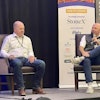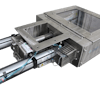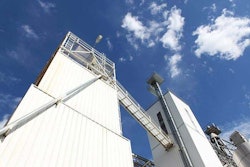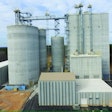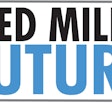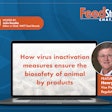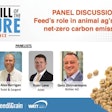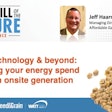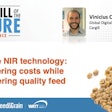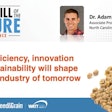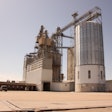Feed industry consultant Wayne Cooper examines strategies for improving the energy efficiency of pellet mills
During times of high energy costs, animal feed producers seek to find efficiencies in their facilities. Beyond obvious areas of concern, there maybe hidden energy consumers driving up costs.
Feed industry consultant Wayne Cooper joins the Chat to explore ways feed mills can “cut kilowatts” through evaluation of pellet mills and other processes.
How to ‘cut kilowatts’ in your feed mill [VIDEO]fromWATT Global MediaonVimeo.
Transcription of Feed Strategy Chat with Wayne Cooper, feed industry consultant
Jackie Roembke, editor in chief, WATT Feed Brands/Feed Strategy:Hi, everyone. Welcome to Feed Strategy Chat. I’m your host, Jackie Roembke, editor in chief of WATT Feed Brands and Feed Strategy magazine.
This edition of Feed Strategy Chat is brought to you by WATT Global Media and FeedStrategy.com. FeedStrategy.com is your source for the latest news and leading-edge analysis of the global animal feed industry.
Today we’re joined on Zoom by feed industry consultant Wayne Cooper. He’s here to talk about strategies to “cut kilowatts” in your feed mill.
Hi, Wayne, how are you?
Wayne Cooper, feed industry consultant:Doing pretty well. Good to see you today.
Roembke:Yeah, great to see you. Let’s get right into it.In earlier discussions that we’ve had, you’d mentioned that pellet mills commonly are not running at peak efficiency. Why is pelleting typically one of the major pain points in feed production?
Cooper:Well, first thing is the pellet mill is 40% of the energy cost in the feed mill — so it’s a major point to take care of and to control. The other thing that I continually see in the mills that I visit is that those pelleters aren’t being used at peak efficiency. And that is, it’s a difficult subject, there’s a lot of variations in pellets, and it’s not extremely well understood, quite frankly. So that’s why it’s a problem.
Roembke:共同的挑战出现在饲料粉碎机s that are maybe improperly implementing different energy saving solutions?
Cooper:You always have to watch when you make a change. You always have to watch what happens downstream in the process after you make that change. A prime example would be someone that turns the temperature down on their broiler to save gas. At the end of the month, they will show that they saved gas, but did they overload the condensate system, the return system, in front of the conditioner and blow water into the conditioner start plugging the pelleter? That’s the type of thing that we see when you do one thing with unintended consequences.
Roembke: We’re talking here about cutting kilowatts. Are there different, or alternative, areas of the feed mill beyond pelleting that can be made more efficient and deliver those returns that a producer might be looking for?
Cooper:There’s little points all over in the feed mill, especially when you’re doing volume. You need to look at your grinding systems, and whether your grinding system is the most efficient for the volume that you’re doing — and particularly micron size. And then just little efficiency points all over in the feed mill. And it might be in your software, it might be in your maintenance program. But keeping everything at peak efficiency and keeping everything running full is critical to lowering the cost and the energy usage on a per-ton basis. And that’s what you’re really after.
Roembke: How can feed mills reduce their energy use per ton, while still maintaining that feed quality and pellet durability?
Cooper:That’s the conundrum, so to speak. What a lot of people miss is that getting your energy use down on a per-ton basis usually involves creating, pushing more volume through the mill. And, in our case, we increased our feed quality and our pellet durability while we’re doing it. There’s quite a few factors to go through, but most of these are in your daily operations and really don’t even take any at least initial extra investment to get the job done.
Roembke: As a feed mill consultant, when you go into a new facility, what’s typically the first thing you look at? Where do you start?
Cooper:Oh, you start the minute you walk inside the mill, actually. So you observe how everything is being handled, whether the mill is clean. Usually, if the mill is clean, there’s also a good maintenance program going on. So we look at we look at a lot of things and then lately I’ve been looking very carefully at how steam systems are set up in front of the conditioner and the pellet mill — and especially if the mill is over 15 years old. They’re usually not quite right so that they need a little tweaking to get peak efficiency.
Roembke: For feed mills or feed manufacturers looking to do a greater evaluation of their energy efficiency and where they could tighten things up a bit, what would be the first step? What’s your recommendation?
Cooper:Well, obviously, it depends on the level of expertise. So the people inside the mill, I would look at two different areas: I would look at feed mill evaluation from an outside source, and then I would look at training programs that are available for your crew, so that they very thoroughly understand the processes they’re going through, and what affects their energy usage.
Roembke:Excellent. Thank you so much for those insights, Wayne. And if you are interested in some of the topics that Wayne discussed here today — and you’ll be at IPPE 2023 — consider joining us at the Feed Mill of the Future Conference on January 24. Here, Wayne will present his talk titled, “Energy efficiency: Cutting kilowatts in your feed mill operation.”
For more information and to view the full program, visitwww.feedmillofthefuture.com.
Thanks so much, Wayne, and thanks to you for tuning in.
= Event At-A-Glance =
2023 Feed Mill of the Future Conference
How efficiency, innovation and sustainability
will shape the feed industry of tomorrow
Co-located with IPPE 2023 | Atlanta, GA, USA
January 24, 2023 | 8 a.m. – 12:00 p.m. | Room B203
Fee:$95 early bird | $125 after Jan. 6, 2023
View the full agenda here:www.feedmillofthefuture.com
How to register?To attend the Feed Mill of the Future Conference, attendees must first register
to attend IPPE. To register for the lowest ticket price today, go towww.ippexpo.org, and visit the “Education Programs” for details.

